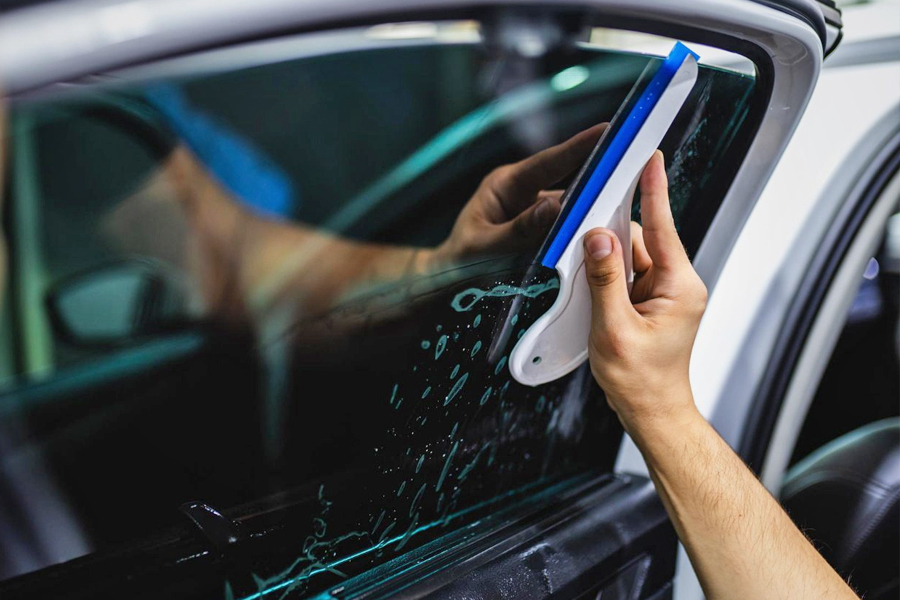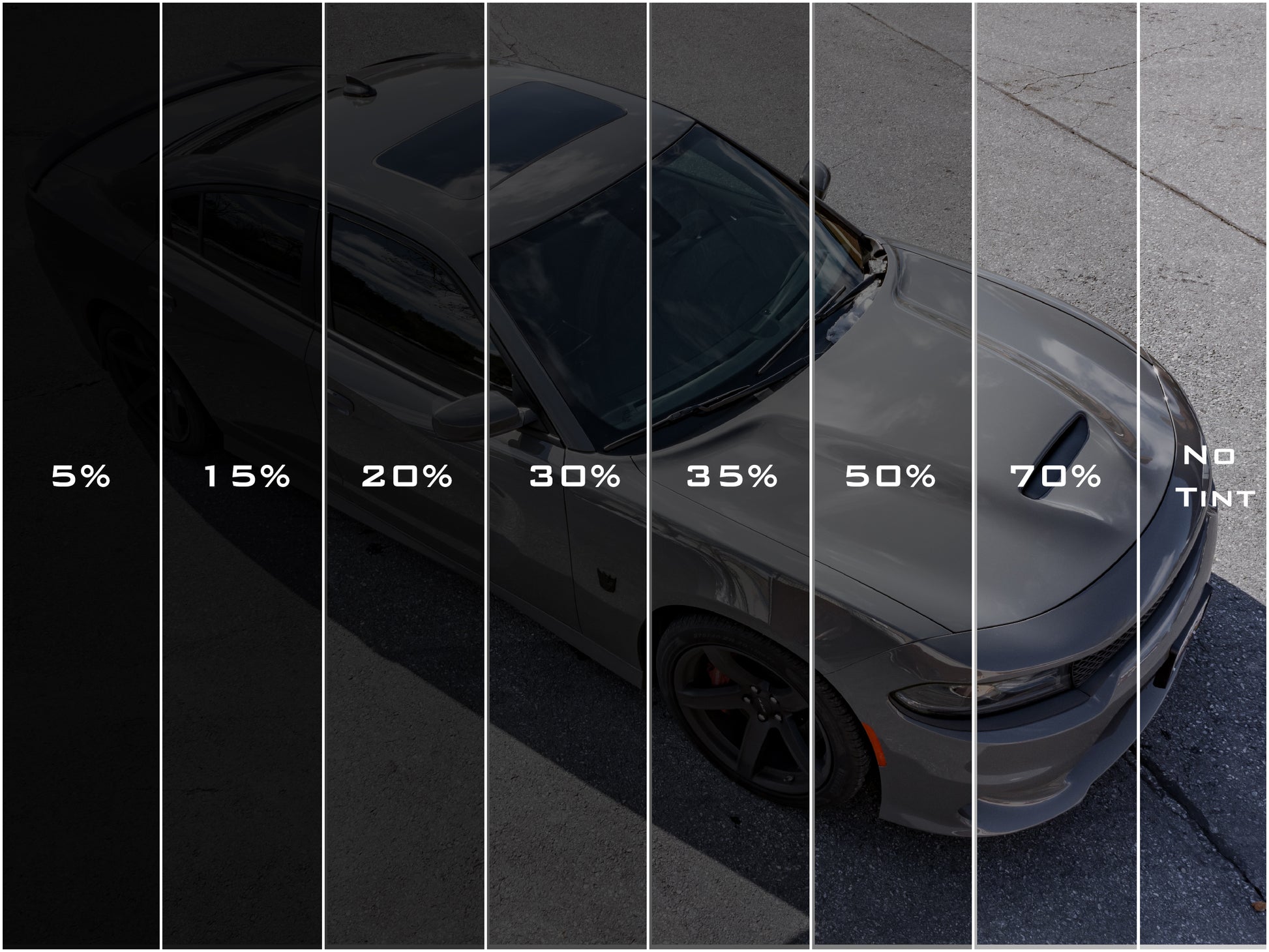Automobile Window Tinting: Durable Protection for Your Automobile's Windows
Automobile Window Tinting: Durable Protection for Your Automobile's Windows
Blog Article
Home Window Tinting Rules and Guidelines: What You Required to Know Prior To Tinting Your Cars And Truck
Prior to waging home window tinting for your automobile, it is important to acquaint on your own with the varied laws and standards that control this technique throughout various states. These guidelines determine the permissible levels of color darkness, usually measured by visible light transmission (VLT) portions, and include certain stipulations for front windscreens focused on making sure roadway safety. Furthermore, particular jurisdictions may use medical exceptions for people with certifying conditions. Comprehending these complexities can save you from potential lawful implications, yet what are the particular guidelines in your state?
Overview of Home Window Tinting Rules
Window tinting laws are often subject to variation across various jurisdictions, mirroring regional regulations and security considerations. These regulations dictate the allowable degrees of color darkness and reflectiveness on lorry windows, guaranteeing that vehicle drivers keep ample exposure while likewise shielding against hazardous UV rays and warmth.
Many laws categorize window tinting based on the Visible Light Transmission (VLT) percent, which shows the quantity of light that can pass via the home window. Normally, reduced VLT percentages represent darker colors. Laws usually distinguish between the front, side, and rear home windows, with more stringent restrictions applied to the front windshield to boost safety for both the motorist and other roadway individuals.
Conformity with window tinting regulations is vital, as offenses can result in penalties, required elimination of the tint, and potential rises in insurance policy premiums. It is essential for vehicle proprietors to familiarize themselves with local regulations prior to proceeding with home window tinting setups.
State-by-State Tint Regulations
Recognizing the specific home window tinting laws in each state is important for vehicle proprietors seeking to adhere to the legislation. Each state in the united state has actually developed its very own collection of rules governing window tinting, which can differ significantly. These policies commonly determine the allowed levels of tint darkness, the kinds of home windows that can be tinted, and any type of clinical exemptions that may use.
For circumstances, states like The golden state have rigid constraints on tint darkness for front home windows, while others, such as New Mexico, may enable darker colors. Furthermore, particular states mandate details presence percents for different home windows, including the windshield, front side windows, and back home windows. It is essential for vehicle owners to acquaint themselves with their state's regulations to avoid potential penalties or penalties.
Furthermore, some states might need a qualification sticker to be positioned on colored windows, suggesting conformity with state regulations. Failing to follow these regulations not only runs the risk of lawful effects but can likewise affect security and visibility while driving. Automobile owners need to carry out detailed research or consult neighborhood authorities to make sure complete understanding and compliance with state-by-state color policies.
Allowed Color Levels and Kinds
Numerous vehicle owners might be amazed to learn that allowed tint degrees and kinds vary extensively across various states. Each state has actually established its very own policies concerning the permitted darkness and reflectivity of window tint, often determined by Visible Light Transmission (VLT) portions. VLT describes the amount of light that can go through the tinted home windows; thus, a lower portion suggests a darker color.

In addition, the kinds of tint materials enabled can vary, with some states forbiding metal or mirror-like surfaces. It is crucial for automobile owners to familiarize themselves with their state's specific regulations to make sure conformity. Non-compliance can lead to penalties, mandatory elimination of the color, or various other lawful repercussions, making it critical to recognize these policies before waging installment.
Medical Exemptions for Tinting
While not all states offer allocations for medical exceptions regarding home window tinting, those that do identify the necessity for specific people to improve presence and convenience due to medical conditions. Numerous clinical conditions, such as lupus, skin cancer, and certain eye conditions, can render individuals particularly delicate to sunshine. As a result, these individuals may need darker colors to shield themselves from dangerous UV rays and glow.

It is necessary to note that even with a medical exemption, there may still be restrictions on the level of color allowed. Conformity with state regulations ensures that individuals are both protected and within legal limitations. Those thinking about medical exemptions need to call their neighborhood Department of Electric motor Autos or equivalent authority to understand the procedures and needs essential to make an application for an exemption effectively.
Fines for Non-Compliance
Falling short to follow home window tinting legislations can bring about considerable fines, which differ by state. Law enforcement firms are equipped to provide citations for vehicles that do not abide by the specified tinting laws. These charges generally consist of penalties, which can range from small amounts to a number of hundred bucks, depending on the intensity of my explanation the violation and the state in question.
In some territories, duplicated offenses might result in escalating fines or extra charges, such as obligatory court looks. Non-compliance might require the elimination of unlawful tinting, typically at the owner's expense. In extreme cases, regular transgressors may encounter suspension of their car enrollment up until compliance is achieved.
Additionally, insurance ramifications may develop from getting numerous citations for window tint offenses. Insurance providers may check out such violations as an indicator of riskier actions, potentially leading to enhanced premiums or difficulty in insurance coverage.
To stay clear of these penalties, it is essential for car owners to familiarize themselves with their neighborhood window tinting laws and make certain that their lorry complies (Window Tinting). This proactive technique not only avoids lawful implications but likewise advertises road safety
Final Thought

Most policies classify window tinting based on the Visible Light Transmission (VLT) percentage, which indicates the quantity of light that can pass via the window. Conformity with home window tinting laws is vital, as infractions can result in penalties, obligatory elimination of the tint, and click site possible boosts in insurance policy premiums.Understanding the particular window tinting laws in each state is vital for vehicle proprietors looking for to abide with the legislation. These policies usually dictate the permitted levels of tint darkness, the types of windows that can be tinted, and any type of medical exemptions that may use.
For instance, states like The golden state have rigorous restrictions on tint darkness for front home windows, while others, such as New Mexico, may enable darker colors.
Report this page